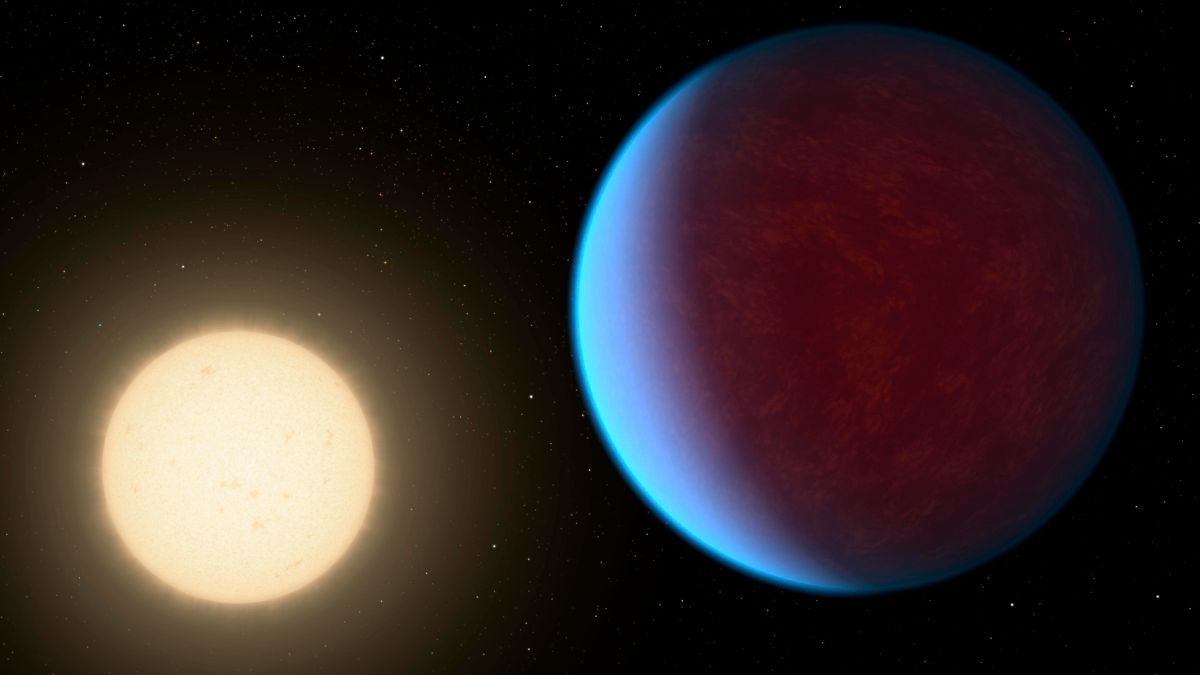The quest to discover worlds beyond our solar system has been long. For years, scientists have been looking for rocky planets with an atmosphere – this is what is essential for any life to thrive. Now one such planet has been discovered in a nearby solar system. It is twice as big as Earth and is surrounded by a thick atmosphere.
The so-called super-Earth — known as 55 Cancri e — is among the few rocky planets outside our solar system with a significant atmosphere, wrapped in a blanket of carbon dioxide and carbon monoxide. The exact amounts are unclear. Earth’s atmosphere is a blend of nitrogen, oxygen, argon and other gases, reports AP.
“It’s probably the firmest evidence yet that this planet has an atmosphere,” Ian Crossfield, an astronomer at the University of Kansas who studies exoplanets and was not involved with the research told the news agency.
But why is this rocky planet’s discovery so significant? Can it be inhabited?
What do we know about the planet?
Researchers who published their findings in Nature journal said the newly discovered planet eight times heavier, twice as big as our planet, is a “super-Earth”. It is significantly larger than Earth but smaller than Neptune. It orbits perilously close to a star dimmer and slightly less massive than our Sun, rapidly completing an orbit every 18 hours or so.
“The atmosphere (of the planet) is likely rich in carbon dioxide or carbon monoxide, but can also have other gases such as water vapour and sulfur dioxide. The current observations cannot pinpoint the exact atmospheric composition,” planetary scientist Renyu Hu of NASA’s Jet Propulsion Laboratory and Caltech, lead author of the study told Reuters.
Impact Shorts
More ShortsThe exoplanet, 41 light years away from Earth, circles its star Copernicus so closely that it has permanent day and night sides. A light-year is nearly six trillion miles (9.7 trillion kilometres).
Can it harbour life?
The exoplanet’s surface is encrusted with magma oceans. Its boiling temperatures can reach as hot as 4,200 degrees Fahrenheit (2,300 degrees Celsius). It is hot as hell and it is unlikely to host life.
“The planet cannot be habitable,” Hu said because it is too hot to have liquid water, considered a prerequisite for life.
“Indeed, this is one of the hottest-known rocky exoplanets, [but] there are likely better places for a vacation spot in our galaxy,” astrophysicist and study co-author Brice-Olivier Demory of the University of Bern’s Center for Space and Habitability in Switzerland, using the term for planets beyond our solar system told Reuters.
Despite these harsh conditions, scientists view the discovery as a promising indication that other rocky planets with thick atmospheres may exist, potentially offering environments more conducive to life.
What did researchers learn about the atmosphere?
To identify the makeup of its atmosphere, researchers studied Webb Space Telescope observations before and after the planet passed behind its star.
They separated the light emitted from the planet versus its star and used the data to calculate the planet’s temperature. There’s evidence the planet’s heat was being distributed more evenly across its surface – a party trick atmospheres are known for.
Gases from its magma oceans may play a key role in holding its atmosphere steady.
The Webb data did not make clear the thickness of the atmosphere. Hu told Reuters it could be as thick as Earth’s or even thicker than that of Venus, whose toxic atmosphere is the densest in our solar system.
By studying 55 Cancri e, scientists hope to gain insights into the early evolution of planets like Earth and Mars, which may have also possessed magma oceans in their early stages before cooling.
“It’s a rare window,” Hu told AP. “We can look into this early phase of planet evolution.”
With inputs from agencies
)